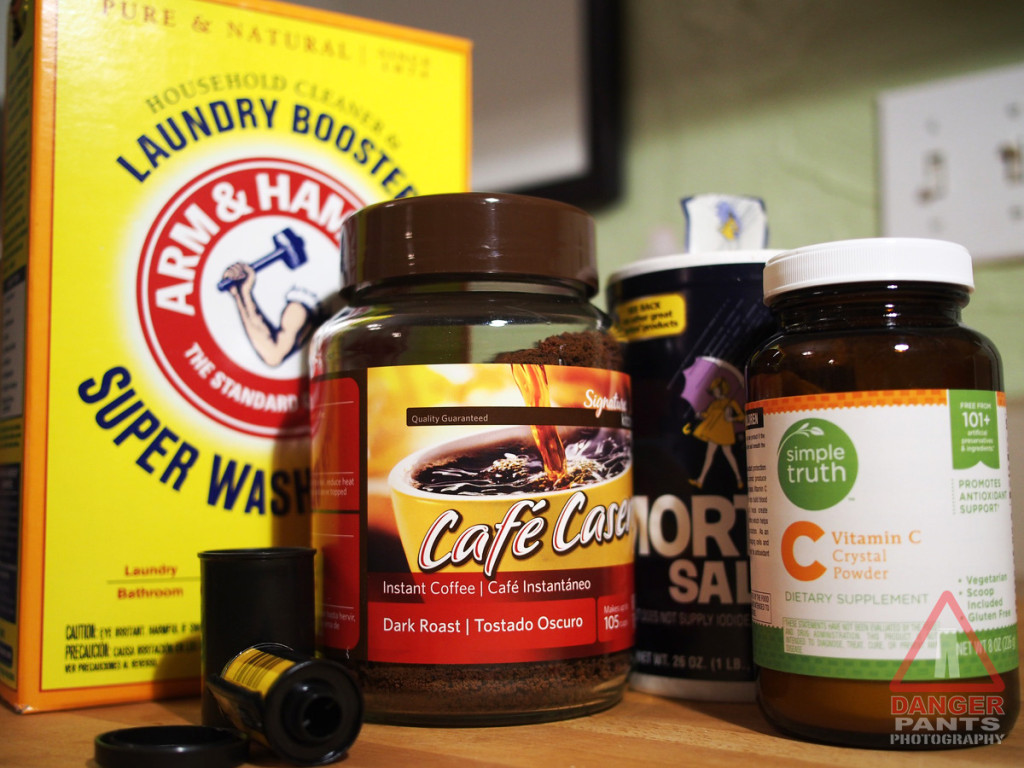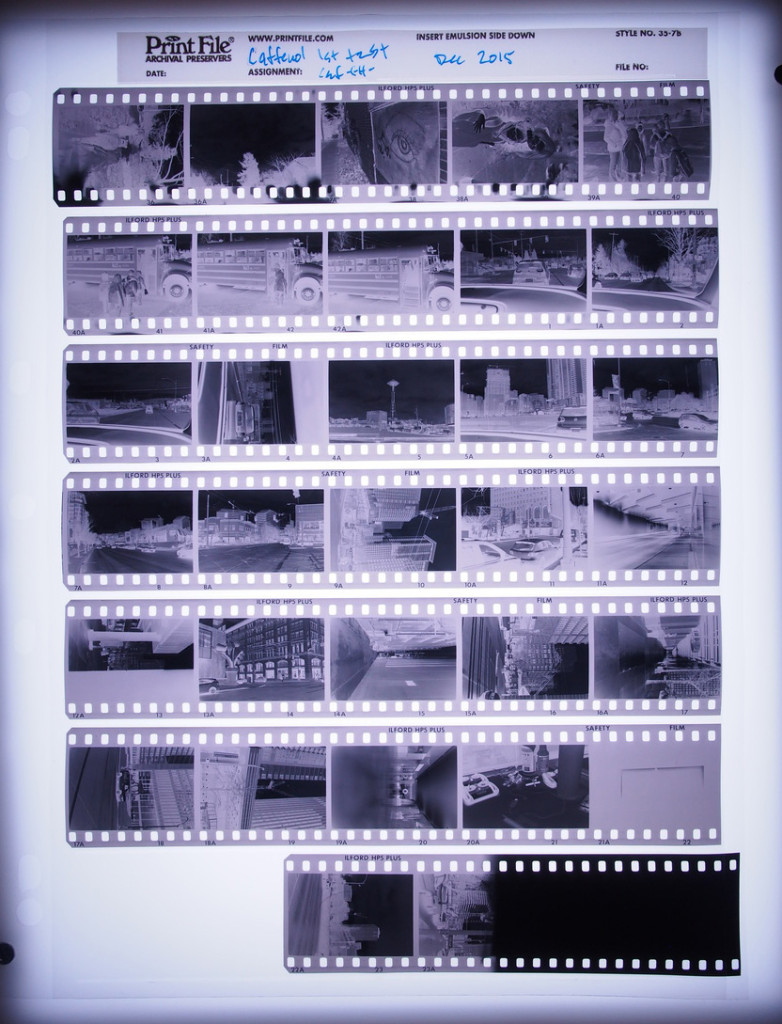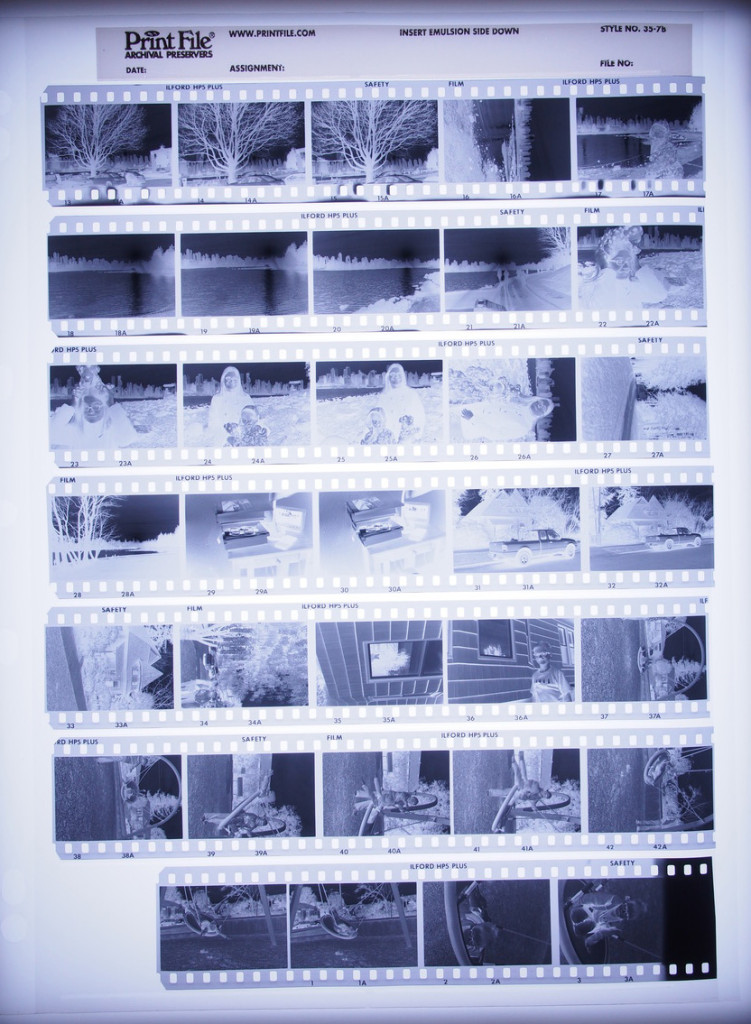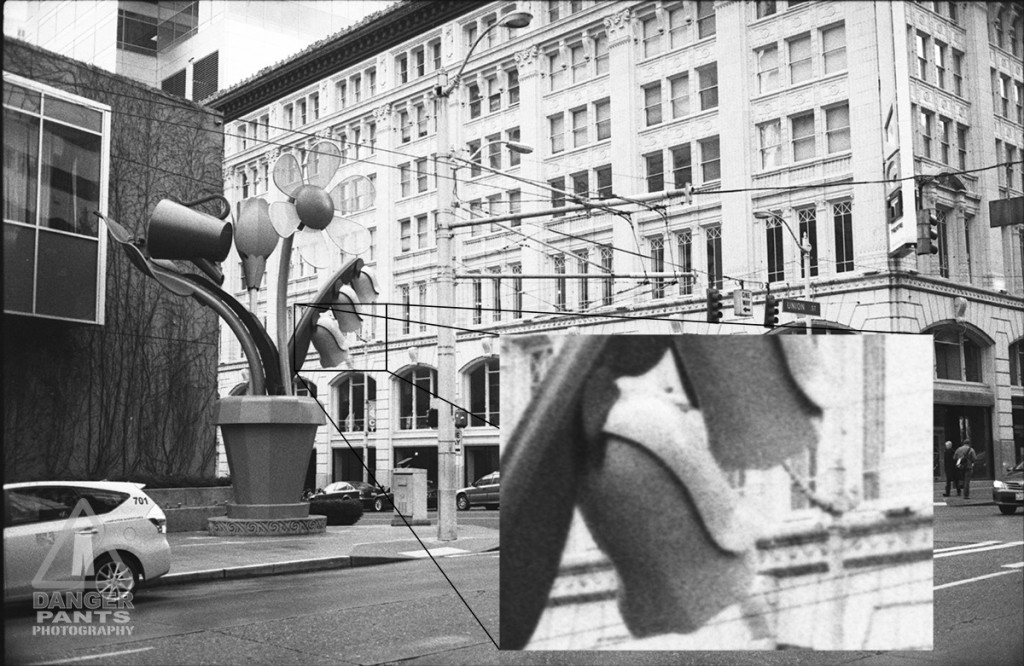I was trolling through some film resources online a month or two ago, and I came across a mention of Caffenol as a developer. Wait a minute thought I, what’s this Caffenol about? That doesn’t sound like a commercial developer…
How right I was! Caffenol is actually a completely home-made film developer, which uses instant coffee as its active ingredient. As soon as I read the description, I had to try it. I dashed off a roll of Ilford HP-5+ 400 ISO 35mm film that I wouldn’t be sad to lose to a bad process, and finally tonight I put together the ingredients, and developed my disposable roll.
The process of mixing Caffenol (I tried for the Caffenol-C-H recipe, though I used insufficient salt after mistakenly thinking it was iodized) is straightforward, and anyone who can afford a cheap digital scale ($10-15 online) and the raw ingredients can put it together. Using it is a bit odd: I’m so used to developer being clear that it felt wrong to pour this pitch-black liquid into the tank. I used the recommended 15 minutes with agitation, though I washed the film a couple times in water before pouring the stop bath in (not wanting it to come out with coffee color, since I reuse my stop bath).
Other than your development process smelling like bad coffee, it was exactly like developing with the XTOL I’m used to.
As a point of comparison, here’s a light table photo of the negatives I developed tonight:
And here is a set of negatives from earlier in the year, developed in XTOL (both pictures shot with the same exposure):
As you can see, the base fog (darkness of the unexposed film stock) is pretty pronounced with Caffenol, but I also used half the amount of table salt I was supposed to (which is specifically to control base fog), so I don’t take this as anything more than a mistake on my part. The shadow detail looks pretty good, and the highlights look very solid.
The scanner has no problem with the film, and the scanned result looks reasonably good. Grain is present, but not substantially worse than XTOL-developed film (I see I also need to work on scanner focus, but that’s a separate issue). I’ve inset a 100% crop from the flowers in the sculpture to show the detail. This was scanned at 6400 DPI, though it has been resized for reasonable web use:
Overall, an interesting experience. Worth a bit more work to see what happens.




